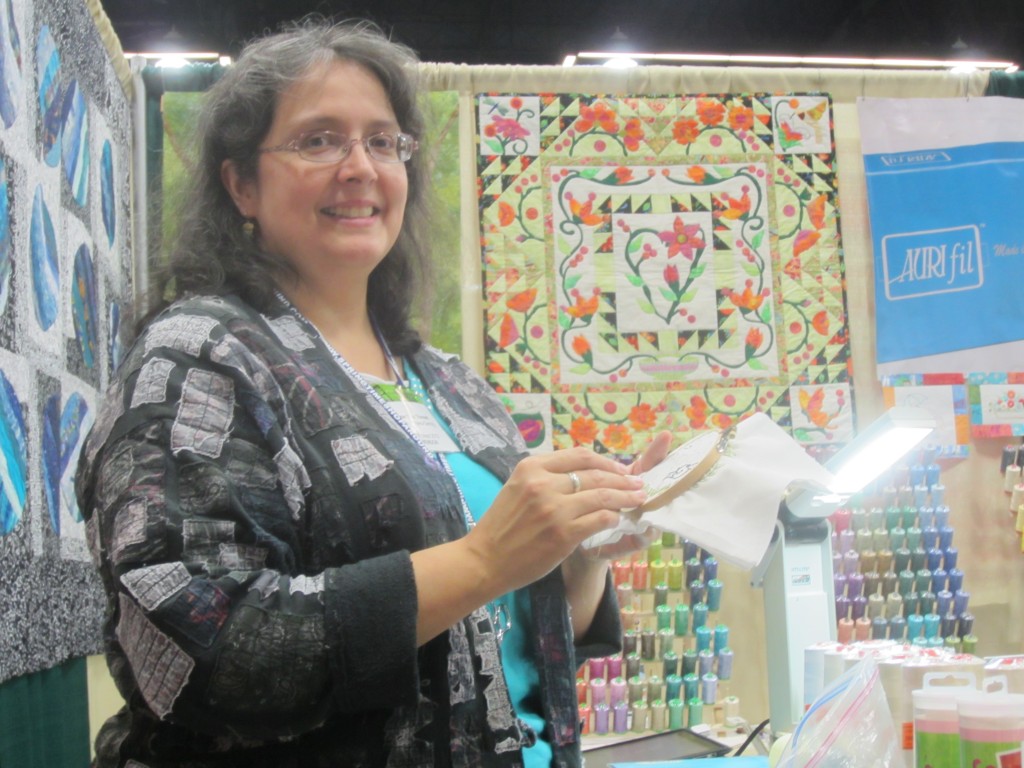 Our friend, Donna Morales-Oemig, kindly agreed to attend a press event for the recent opening of Quilt and Color: The Pilgrim/Roy Collection at the Museum of Fine Arts in Boston. The following is her firsthand account of what she experienced at this special exhibit.
Our friend, Donna Morales-Oemig, kindly agreed to attend a press event for the recent opening of Quilt and Color: The Pilgrim/Roy Collection at the Museum of Fine Arts in Boston. The following is her firsthand account of what she experienced at this special exhibit.
Quilts and Color: The Pilgrim/Roy Collection
by Donna Morales-Oemig.
Boston tourism should surge this spring with the new exhibit, Quilts and Color: The Pilgrim/Roy Collection, at the Museum of Fine Arts. The exhibit is the centerpiece of several Spring into Color at the MFA events scheduled throughout the season. The Pilgrim/Roy collection began about 50 years ago when Paul Pilgrim and Gerald Roy began collecting quilts, first for clients, and then for their own collection. That collection now includes more than 3,000 pieces of textile art, quilts, quilt tops and other unfinished objects. The main criterion for an item joining the collection was color and condition.
The exhibition’s 58 quilts are framed around color theory. Told in layman’s terms with spectacular examples of quilts, the principles of contrast, gradations, harmony, mixture, optical illusion, singular visions, variation and vibration are highlighted, and the entire exhibit is complemented by contemporary works of fine art reflecting shared principles of color theory. Remember that for this exhibit, the quilts came first, sometimes nearly 100 years before the art piece. Having an affinity for working with color does not have to come from art school.
“This is the show I have always wanted to do my whole life,” Roy says, adding that for him, the exhibit represents a lifetime of collecting and studying quilts.
When you enter the first gallery, Vibrations, there is an Ocean Waves quilt and across from it is a magnificent Carpenter’s Wheel quilt, both from the late 1800s. Orange and cheddar yellow dominate these quilts and the vibration comes from the visual play between the greens and reds within the quilts. The contemporary art piece accompanying these quilts is an untitled screen print by Richard Anuszkiewicz from 1965.
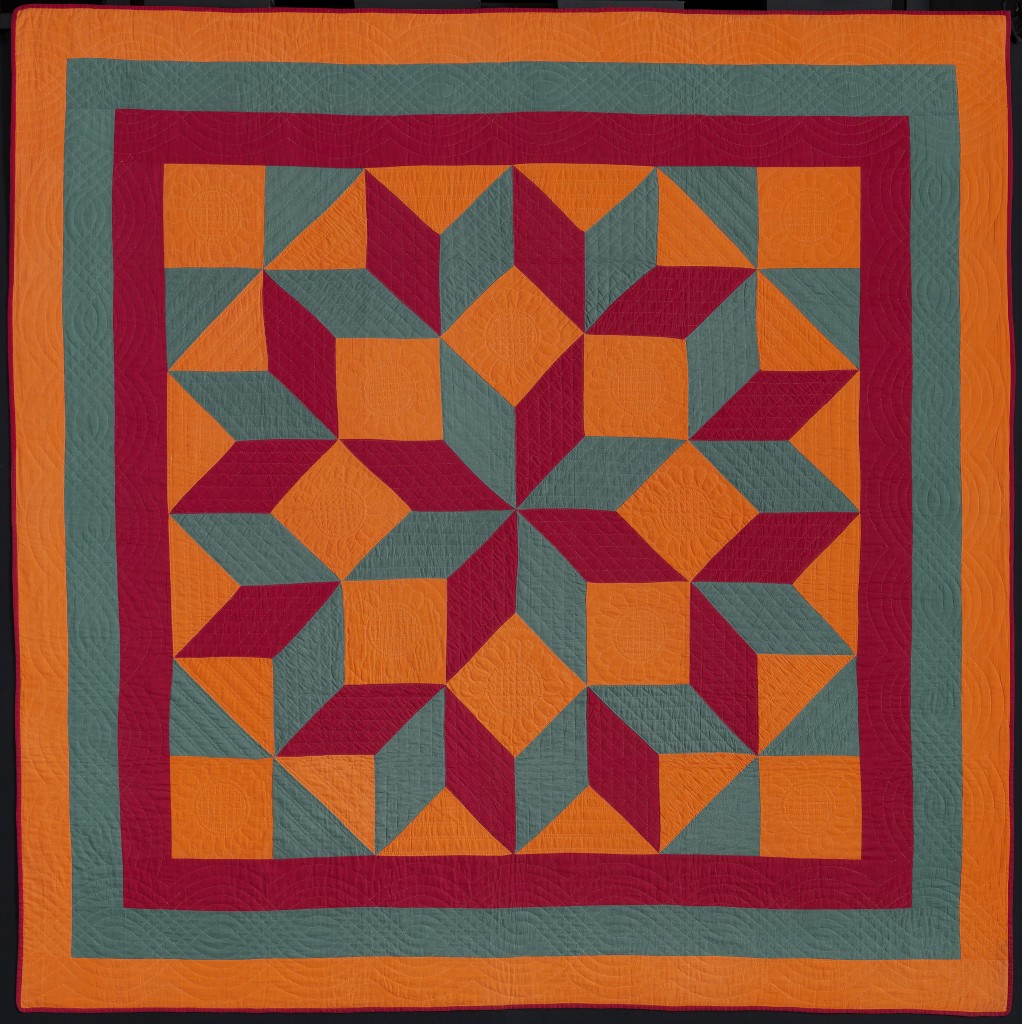 Carpenter’s Wheel Quilt Pilgrim / Roy Collection
Carpenter’s Wheel Quilt Pilgrim / Roy Collection
Courtesy, Museum of Fine Arts, Boston
Log Cabin-style quilts make up the Variations gallery and are contrasted with Sol LeWitt’s woodcuts, Bands (Not Straight) in Four Directions. A number of Sunshine and Shadow quilts and Barn Raising sets are represented, spanning the 1870s-1930s. A surprising assortment of pinks, yellows, greens and blues are found in a Straight Furrow variation quilt from Pennsylvania from the 1870s. And a very unusual Barn Raising variation, also from Pennsylvania in the early 1900s, is framed with deep reds in the blocks and borders, showing the versatility of this popular quilt block.
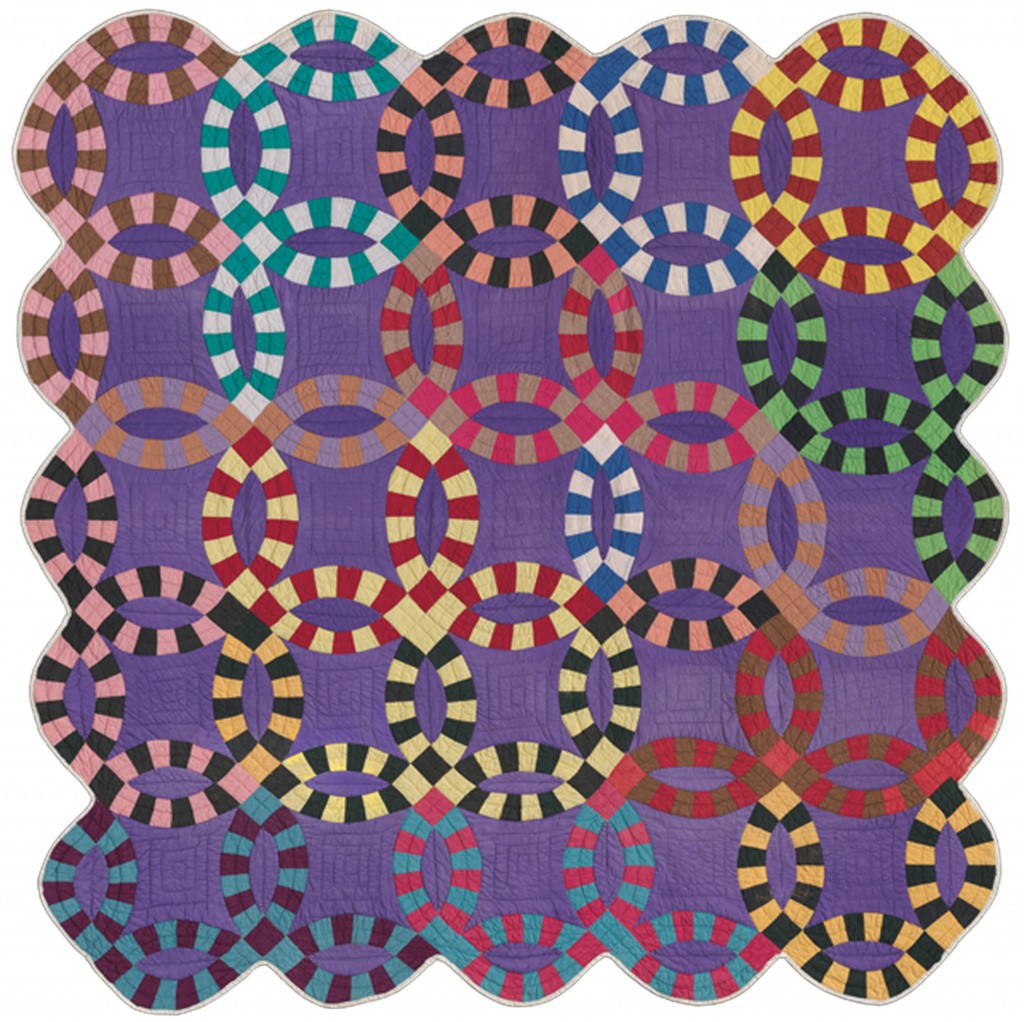 Double Wedding Ring Quilt Pilgrim / Roy Collection
Double Wedding Ring Quilt Pilgrim / Roy Collection
Courtesy Museum of Fine Arts, Boston
The Optical Illusion gallery houses some of the most intriguing, challenging and creative examples of color placement. Geometric designs form circles of pattern and color that widen and shift across the quilts. Tumbling Blocks appear in both the quilts and the contemporary art selection from Victor Vasarely (MEH2, from the series Homage to the Hexagon, 1969). Much skill was needed to beautifully appliqué the hundreds of circles on Bunches of Grapes, from about 1875. Two different Thousand Pyramid quilts display how wool fabrics absorb light while cotton fabrics reflect light. Hexagon-loving quilters can spend hours studying the Field of Diamonds quilt, from about 1860. Black hexagons outline diamond shapes, also made of hexagons, and all with little clusters of orange hexagons forming an overlay of circles on the quilt. Its maker was genius in her execution of this quilt.
The final gallery, Singular Visions, houses unconventional examples of quilts and tied comforters. There is an Amish-made Streak of Lightning quilt with patterned fabric, a1920s Tumbler’s Quilt made in horizontal strips (but whose pieces don’t align) and a Seven Sisters quilt with a dozen full blocks of seven stars in circles and four half blocks. Did the maker actually cut those blocks, or just not piece full blocks? The cover quilt on the show catalog and other marketing material is a Double Wedding Ring, not with typical white background fabrics, but crafted from bright purple. Only one full ring is made of the same colored melons although four melons of each colorway are contained in the quilt. The maker grouped the melons, linking most into partial rings while scattering the other melons around completing the overall design. The art representing this gallery is Sister Mary Corita Kent’s N is for Caution (Throw Caution to the Wind), done in 1968. (Kent is also known for her Rainbow Swash design that was painted on a Boston natural gas storage tank–known to commuters as a landmark–and the 1985 Love postage stamp.)
Thousand Pyramids Quilt Pilgrim / Roy Collection
Courtesy Museum of Fine Arts, Boston
Information and a ton of resources about this incredible exhibit can be found at the museum’s website, www.mfa.org. The exhibit will run through July 27.


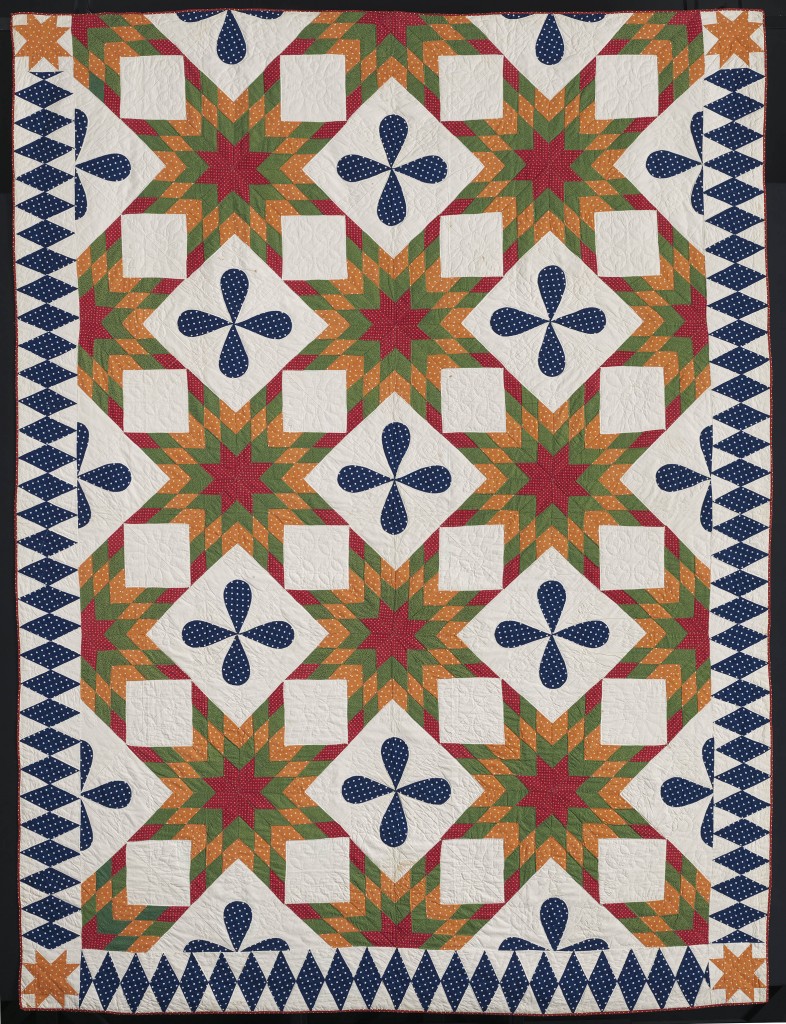
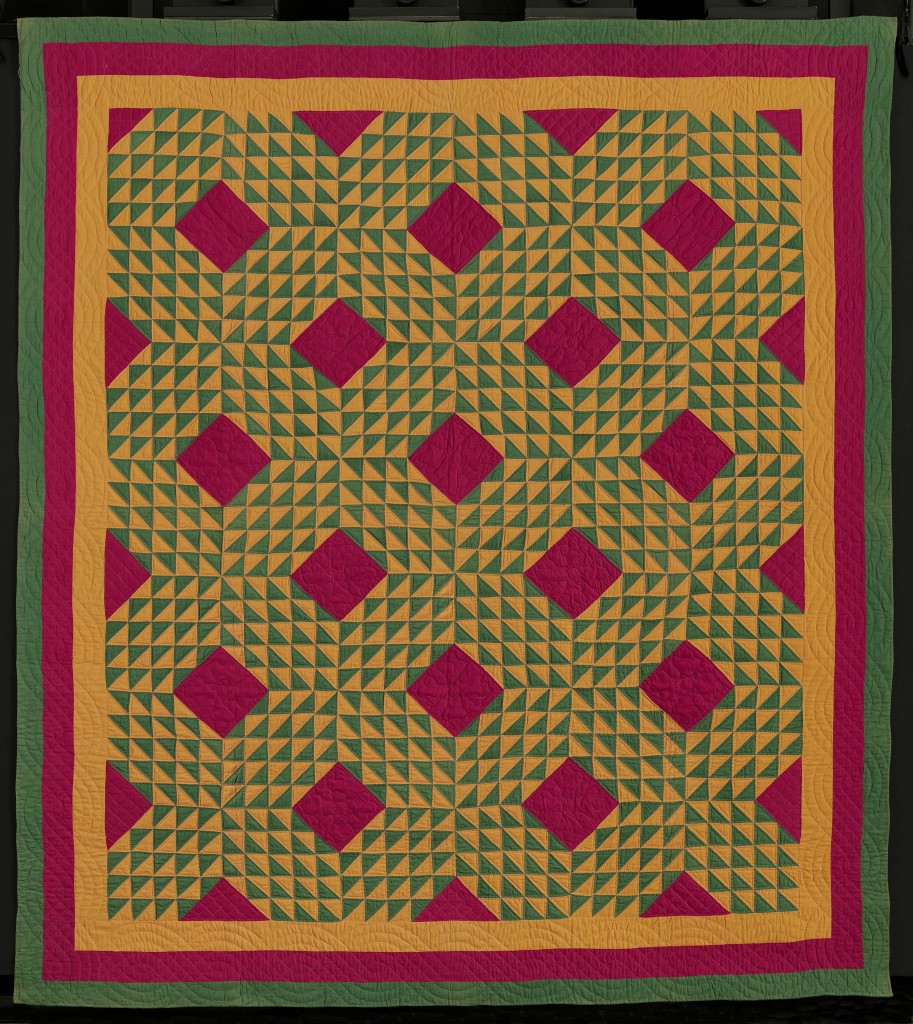
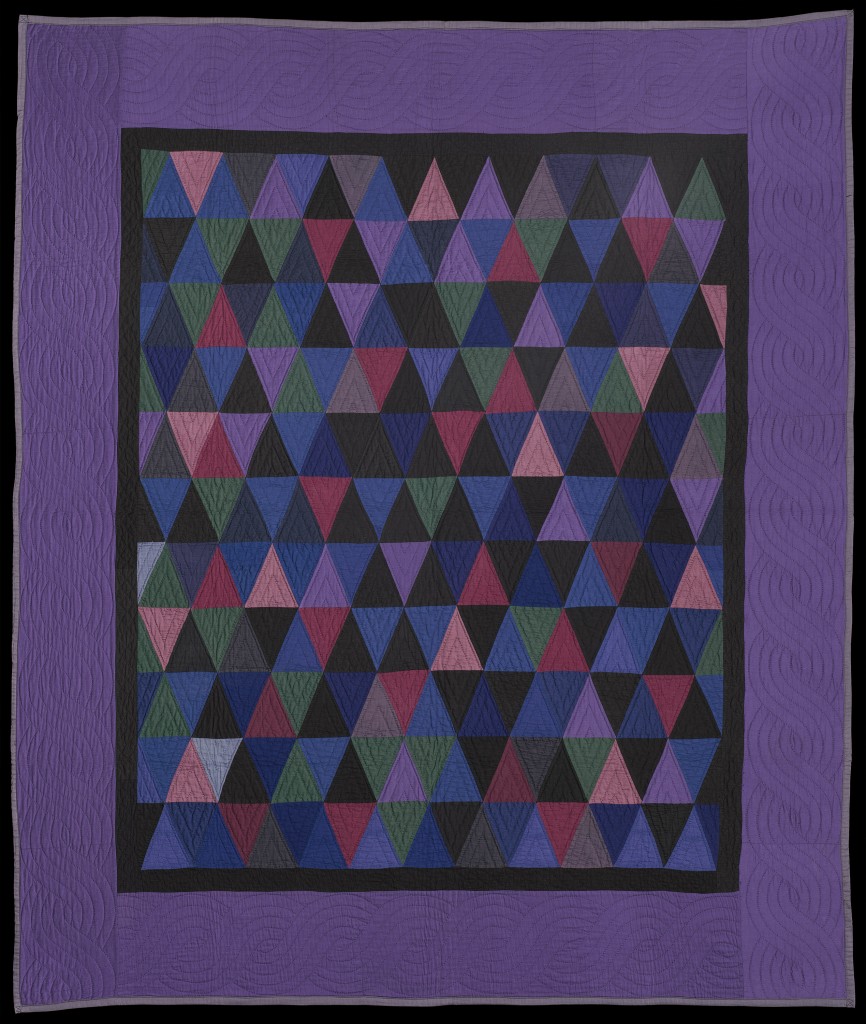
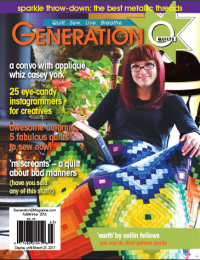
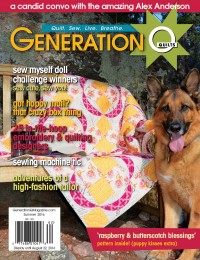

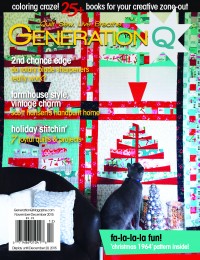
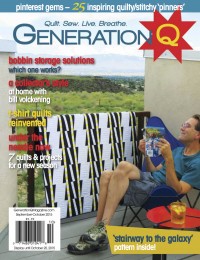
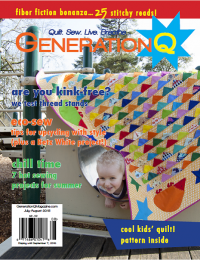
COMMENT #1
Thanks for the word and picture tour of the exhibit! It would be wonderful to go to Boston & see it in person…